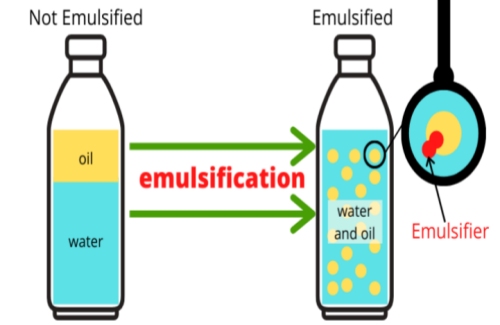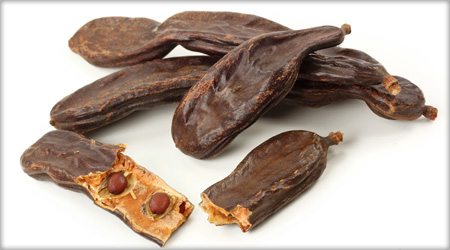Find out Just How an Emulsifier in Food Can Assist Achieve Perfectly Combined Dishes Each Time
Emulsifiers are essential active ingredients in the culinary world, making it possible for the blending of oil and water-based components. Their capacity to decrease surface stress enables the creation of stable blends, improving both appearance and flavor in different dishes. Recognizing how these compounds feature can transform the means one approaches cooking. Yet, several stay not aware of the different sorts of emulsifiers and their details applications. Exploring this subject discloses useful understandings for accomplishing culinary perfection.
What Are Emulsifiers and How Do They Work?
Emulsifiers play a necessary function in the food industry by making it possible for the stable mixing of ingredients that commonly do not combine, such as oil and water. These compounds have both hydrophilic (water-attracting) and hydrophobic (water-repelling) homes, permitting them to interact with both types of components. When an emulsifier is added to a blend, it lowers the surface area stress between the oil and water, assisting in the development of little beads of one fluid distributed within the various other. This procedure develops a secure solution, protecting against separation over time and enhancing texture and mouthfeel. Emulsifiers are fundamental in various food, from salad dressings to gelato, guaranteeing consistency and quality. They also contribute to the overall sensory experience of food, affecting taste launch and aesthetic charm. Comprehending exactly how emulsifiers work is vital for food scientists and chefs alike, as they endeavor to create delightful and well balanced cooking experiences.
Typical Sorts Of Emulsifiers Used in Food Preparation
Many sorts of emulsifiers are utilized in food preparation to accomplish desired appearances and security in various foodstuff. Usual emulsifiers include lecithin, which is naturally located in egg yolks and soybeans, and is commonly used in mayo and dressings. One more prevalent emulsifier is mustard, which has substances that assist blend oil and water in sauces.
Additionally, industrial emulsifiers such as mono- and diglycerides are typically included in refined foods to improve their stability and improve service life. Starch-based emulsifiers, stemmed from corn or potatoes, are also used in sauces and puddings for enlarging and structure. Finally, casein, a milk healthy protein, functions as an emulsifying agent in milk products like cheese and lotion. Each of these emulsifiers plays a vital role in making sure that ingredients blend flawlessly, offering the wanted consistency and taste in cooking creations.
The Scientific research Behind Emulsification

The security of an emulsion depends on the balance in between the pressures acting upon the spread beads. If the droplets coalesce, the emulsion can damage, bring about separation. Various elements, such as temperature, concentration of the emulsifier, and the technique of mixing, influence the success of emulsification. Understanding this clinical foundation is necessary for achieving consistent results in culinary applications involving emulsions.
Tips for Using Emulsifiers in Your Recipes
When incorporating emulsifiers right into recipes, careful consideration of their homes and capability can substantially enhance the end product. First, one should pick the suitable emulsifier based on the desired appearance and security of the meal. Emulsifier In Food. Typical options include mustard, egg, and lecithin look at this site yolks, each offering special benefits
It's important to recognize the temperature level at which the emulsifier works ideal; as an example, some emulsifiers work properly at room temperature, while others call for warm. Gradually including oil to the emulsifier while whisking can assist develop a steady solution.
Additionally, the proportion of emulsifier to liquid is crucial; inadequate may result in splitting up, while excessive can produce an undesirable appearance. Correct storage space conditions need to be thought about, as some emulsified items might call for refrigeration to maintain stability and quality. By adhering to these tips, cooks can accomplish constantly well-blended dishes.

Delicious Recipes Featuring Emulsifiers
While numerous cooks may not realize it, incorporating emulsifiers into dishes can boost meals to new heights of taste and texture. As an example, a timeless vinaigrette advantages substantially from the enhancement of mustard, which works as an emulsifier, giving a smooth uniformity that binds oil and vinegar effortlessly. Homemade mayo showcases the power of egg yolks, developing a creamy, luxurious sauce excellent for sandwiches and salads. - Emulsifier In Food
In baking, emulsifiers like lecithin can assist achieve a tender crumb in muffins and cakes, improving moisture retention. An abundant chocolate ganache, made with hefty cream and chocolate, can likewise incorporate an emulsifier to keep a smooth finish. In addition, gelato often make use of emulsifiers to ensure a luscious structure and prevent ice crystal formation, resulting in a fascinating dessert experience. By incorporating these emulsifying representatives, chefs can produce dishes that delight the taste and offer an enjoyable mouthfeel.
Often Asked Questions
Are Emulsifiers Safe for Individuals With Food Allergies?
Emulsifiers can be safe for individuals with food allergic reactions, depending upon the specific emulsifier utilized. However, cross-reactivity and specific sensitivities vary; subsequently, getting in touch with a health care specialist is anonymous recommended to assure safety.
Can I Make My Own Emulsifier in your home?
Yes, people can develop homemade emulsifiers using components like egg yolks, mustard, or honey. These all-natural choices can properly blend oils and water-based elements, offering a straightforward option for numerous culinary applications.
Exactly How Do Emulsifiers Impact the Nutritional Value of Food?
Emulsifiers can improve the dietary worth of food by improving nutrient absorption and security. However, extreme intake might result in adverse effects, potentially changing digestion procedures and influencing gut health in sensitive individuals.


Exist Any Type Of Unfavorable Negative Effects of Consuming Emulsifiers?
Some research studies suggest that taking in emulsifiers may bring about intestinal concerns or disrupt digestive tract microbiota equilibrium. Nevertheless, more research is needed to totally understand their long-lasting results on health and prospective adverse negative effects.
Can Emulsifiers Adjustment the Flavor of My Recipes?
Emulsifiers can discreetly modify the taste account of recipes. By enhancing structure and mouthfeel, they might make tastes more noticable or balanced, yet they usually do like this not impart solid preferences on their own.
Emulsifiers play a necessary duty in the food industry by enabling the steady mixing of components that commonly do not combine, such as oil and water. Various types of emulsifiers are used in food preparation to attain wanted textures and stability in different food items. In addition, commercial emulsifiers such as mono- and diglycerides are typically included to refined foods to boost their security and boost shelf life. It's important to understand the temperature level at which the emulsifier operates finest; for circumstances, some emulsifiers function properly at area temperature level, while others call for warm (Emulsifier In Food). Emulsifiers can be risk-free for individuals with food allergies, depending on the particular emulsifier used